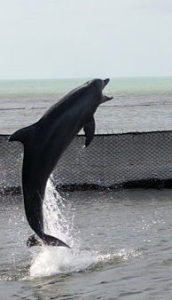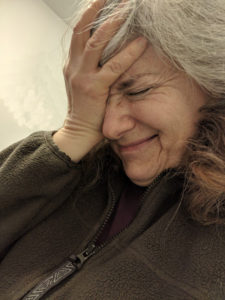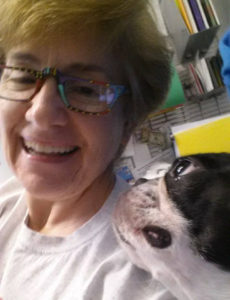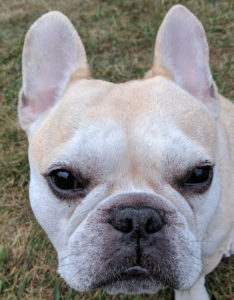He’s great, but …
It’s not easy learning that your puppy, in addition to all his wonderful qualities, has a temper and can be aggressive toward other dogs. Simon just turned one year old. He’s a tiny little thing, but has a HUGE personality and a hair-trigger temper. Once he’s had enough play (usually with my sister’s French Bulldog, Torque), it’s almost as if he says, “That’s enough! I’m done with you!” and turns into a snarling little demon.
It’s my job to fix that.
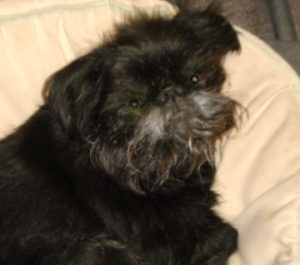
Fortunately (or unfortunately?) I have experience with turning an aggressive dog around. Tango, my 10-year-old Brussels Griffon, is much better now, but when I got him (at 11 months old) was reactive towards everyone. When Tango was young he hated everyone that wasn’t me. Even my sister. Since we live together, that was a big problem. Hope hand-fed Tango his dinner for weeks until he accepted her. He still wasn’t crazy about her, but we could all live together.
Work in progress
Day after day, week after week, month after month, even year after year, Tango’s training was a top priority. I knew that he could be an excellent agility dog but I didn’t want him branded as aggressive. We had to be able to walk together through crowds, down the street, through a parking lot when I had my hands and arms full of crates, treats, toys, and other paraphernalia. So, while we were going to class for agility fundamentals, I was also training him to be a good pet.
It was essential to keep him focused on me at all times. I was vigilant about our surroundings and noticed what was going on around us at all times. If anyone was approaching, I made sure to start a focus behavior. At first the approaching person / people / person and dog had to be at a significant distance. As Tango started accepting that other beings were allowed to exist on the planet, the distance could be slightly reduced. This was not a matter of days or even weeks, but months.
Focus phrase
A key phrase that I used to keep him focused on me was, “Cute dog!” I did not say anything at first – remember that we were at a significant distance. When Tango looked at me, I’d say our focus phrase and give him a yummy treat. If he kept looking at me, I’d give him another treat and say something like, “Yes, you’re the cute dog!” Eventually I could say the phrase when he wasn’t looking at me and Tango’s eyes would latch onto my face.
Why the phrase “Cute dog?” Even though Tango is small, I didn’t want people to see him as aggressive. People look at aggressive dogs differently. Their posture is different. But when someone sees a little fuzzy dog and hears that phrase, they’ll have a smile on their face.
Tango and I competed in agility for quite a few years, and he advanced to the Master level. We walked confidently through crowds at trials and Tango kept his attention on me. I still don’t trust him completely. I’m always watchful when we’re out and about, but he’s worlds better than he was as a puppy.
Phrase that pays – again
So now I have to train Simon to keep his attention on me. I’ll be training the “Cute dog!” cue and I’ll also be doing other small tricks to keep him engaged when we’re waiting for a red light on our walks.
Those small tricks? Fun stuff for treats, like hand touches, spins, simple position exercises.
And Simon is learning to come to me when I call him. That’s proving to be very useful when I see him starting to ramp up in his play.
I know that it won’t be done in a day, and Simon may never play nicely with dogs that aren’t in the family, but that’s OK. He doesn’t have to play with other dogs. And there’s no deadline for having a nice dog.

